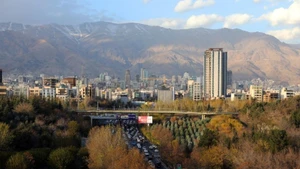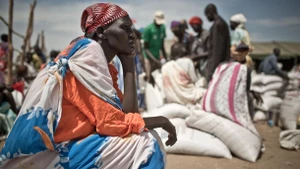The UNCCD report is considered groundbreaking, as previous studies understated the severity of the issue. UNCCD Secretary-General Ibrahim Thiaw explained that, unlike drought, which is a temporary period of low rainfall, dryness represents a long-term and often irreversible change. According to Thiaw, dryness is affecting vast regions worldwide and is “redefining” life on Earth.
Barron Orr, Chief scientist of the UNCCD, noted that dryness could have severe consequences for both nature and humanity. The UNCCD’s research found that areas affected by dryness expanded from 37.5% to 40.6% of the planet’s land surface (excluding Antarctica) between 1990 and 2020. This increase alone represents 4.3 million square kilometres, an area larger than India — the seventh-largest country in the world.
Highlighting global hotspots for dryness, the UNCCD reported that wildfires are occurring more frequently and intensely in Brazil and parts of the western United States. High-biodiversity regions, such as Central Africa and parts of Asia, are experiencing ecosystem degradation, including desertification, which is threatening many species of plants and animals. The UNCCD predicts that an increase in dryness by the end of the century could lead to large-scale ecosystem impacts and cause the extinction of many species.
The UNCCD report identifies climate change as the primary driver of these consequences. Human activities such as transportation, industry, and agriculture have contributed to rising greenhouse gas emissions, which in turn cause global warming. Humanity is now facing the repercussions of its own actions. According to the report, approximately 2.3 billion people currently live in drylands.
Water scarcity and land degradation are reducing agricultural yields, leading to poverty and disease. Forced displacement is another evident consequence. As barren lands become uninhabitable, many people in the Middle East, North Africa, and South Asia have been forced to leave their homes. In the worst-case scenario, if global temperatures continue to rise by the end of the century, the report predicts that up to 5 billion people could be living in dryland areas.
Along with these alarming statistics, the UNCCD report offers recommendations: improving measurement and monitoring systems to detect changes early and implement appropriate interventions before conditions worsen, promoting sustainable land use, and investing in technologies such as rainwater harvesting, drip irrigation, and wastewater recycling. National policies should also align with international goals to ensure coordinated responses.
The UNCCD report was released during the 16th Conference of the Parties (COP16) of the United Nations Convention to Combat Desertification (UNCCD), currently being held in Riyadh, Saudi Arabia. The event brings together representatives from 196 countries and the European Union (EU). This conference marks the 30th anniversary of the adoption of the UNCCD and is the first COP of this convention to be held in a Middle Eastern country. The theme of COP16 is “Our Land. Our Future.”
















